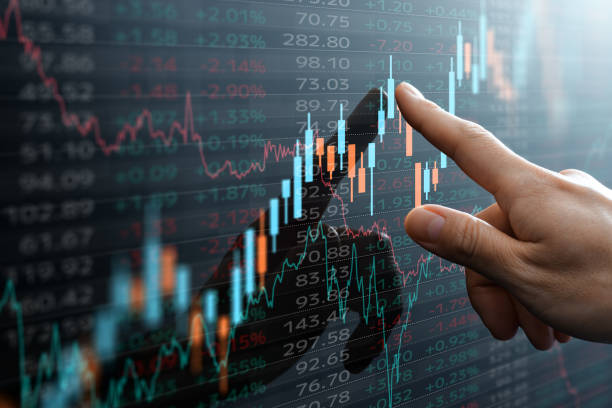Are you interested in the ever-shifting world of currency exchange and want to know how to analyze the forex markets? The foreign exchange market, or Forex for short, offers vast potential for those who can navigate its complexities. With trillions of dollars traded daily, understanding the forces that drive currency values is crucial for successful participation. Let’s equip you with the tools and techniques to analyze the Forex market effectively, combining fundamental, technical, and sentiment analysis for informed trading decisions.
Fundamental Analysis: Delving Into The “Why”
Basic analysis focuses on the scope of economic, political, and social factors that mainly contribute to the core value of a currency. You have to concentrate on and analyze these drivers to figure out what decisions to make in terms of currency options and trades.
Here are the key elements of fundamental analysis:
Economic Indicators
This data can be incorporated in this context, for example, the unemployment rate, inflation, basic interest rate, and Gross Domestic Product. Capital-rich economies see a building up of the currency values while less developed economies see a devaluation of their currency.
Political Events
Political stability, the election of a new government, and its popularity also cause the table of exchange rates. For instance, political instability might gamble upon a huge amount of forex outflow from home to foreign. It may lead to a shortage of international currencies in the Federal Reserve.
Interest Rates
Central banks lend reserves at lower interest rates to force banks to loan more money to consumers and firms. Foreign capital is more likely to be attracted to countries with lower interest rates, this is why the exchange rate tends to be stable.
Supply And Demand
A national forex rate will naturally move accordingly to the extent of attainable demand for that currency. Trade, foreign investment, and foreign currency are inward and outward transactions, thus, carrying this contingent demand.
Technical Analysis: Reading The “Chart Story”
A “Chart Story” on the possibilities of environmental degradation by mining operations helps to inform viewers on this important issue. Technical analysis includes using historical price charts and technical indicators to find trends, support, and resistance levels, and to determine what trades could be the most suitable to enter and exit.
Here are some key technical analysis tools:
Price Charts
These charts are made for representations of the historical price movement pattern for a given time frame. Trend graphs are favored for line, bar, and candlestick charts.
Support And Resistance Levels
Price levels refer to zones where buying activity is highly possible to hinder the price fall of a given currency. Similarly, price resistance levels indicate areas where selling pressures prevail, and the prices might not increase.
Technical Indicators
They include various calculations based on the price and volume data of the market that tell the trader when to make an order. These indicators constitute Bollinger Bands, Relative Strength Index, and Moving Average Convergence Divergence which mean MACD.
Beware Of Overreliance
Technically analysis can’t be taken as an isolated concept. It will be very beneficial to take into account technical signals side by side main factors; it provides some valuable insights for more holistic analysis.
Trend Lines
It is these where you detect a trend in charts by drawing a direction that is either an uptrend, downtrend or a sideways trend to determine the current trend. If all of this feels too complicated for you, consider looking for Forex brokers based in South Africa to get fruitful analytics and results.
Sentiment Analysis: Gauging Market Psychology
The sentiment analysis scheme aims to discover the overall market mood – the mood is traders feeling optimistic (bullish) or pessimistic (bearish) about certain currency pairs. One can obtain this information from a number of sources:
News Articles And Social Media
Public views may be recognized by the articles in media and conversations on different social media. The spread of pieces of information that can benefit some investors while not benefiting others like, for instance, a rise in a currency’s value and a drop in the same are likely to occur.
Commitment Of Traders Reports
These figures, scheduled for release by regulatory agencies, reflect the firms’ intentions to take offsetting positions via large players like hedge funds and investment banks. You can get some information about investors’ moods by a strengths and weaknesses analysis of these positions.
Putting It All Together: A Guide For Investigation
Having a look at the various analytic methods in place, it’s time now to perform a detailed market estimation. Here’s a potential framework:
Identify A Currency Pair
Pick the currency pair you want to trade among the major currency pairs. The top leaders are the EUR/USD, USD/JPY, and GBP/USD.
Consolidate Your Findings
Now based on the three areas you have identified, you can get a grasp of your findings. Identify any intersection between your fundamental analysis and technical analysis. For instance, this could be in the form of, the case when for any country the strong economic data harmonizes with its bullish technical indicator on a currency pair, positioning the country for a strong trade.
Refine Your Strategy
Your analysis results determine your trading strategy. Establish your entry and exit positions, specify your risk level of loss with stop-loss orders, and set up target levels of profit at realistic levels.
Continuously Monitor
The foreign exchange market is varied. Only after you have set up a position and picked the currency pair, you should keep an eye on new developments and news. Be flexible enough to rethink and implement changes if necessary.
Conclusion
Conducting a Forex analysis is like doing a multifaceted task as one needs to give it intention and continuous study. It is a unique opportunity to integrate the fundamentals, technical, and sentiment analysis with safety risk management practices to open paths to better results in this very dynamic market.
Recall that hundreds of thousands of people come to school every day but still aspire to achieve their goals. Make a good defensive framework, keep your risk management well-balanced, and always learn by step as you get more exposure to the market.









